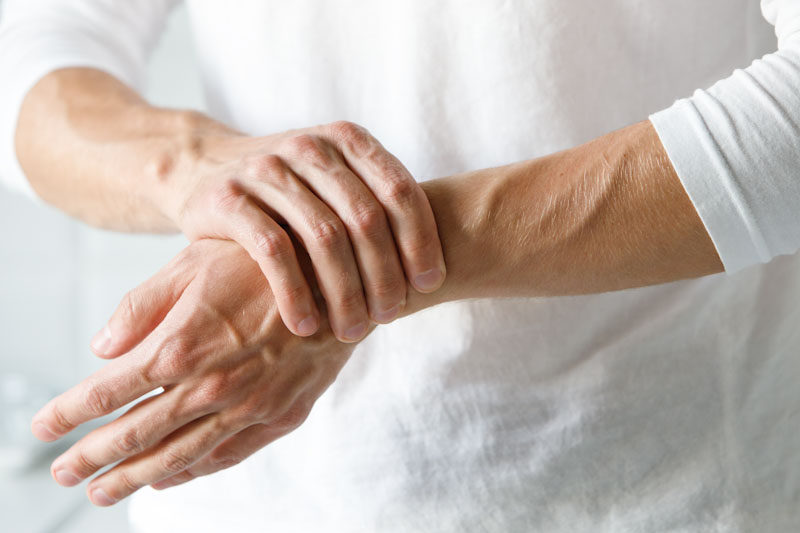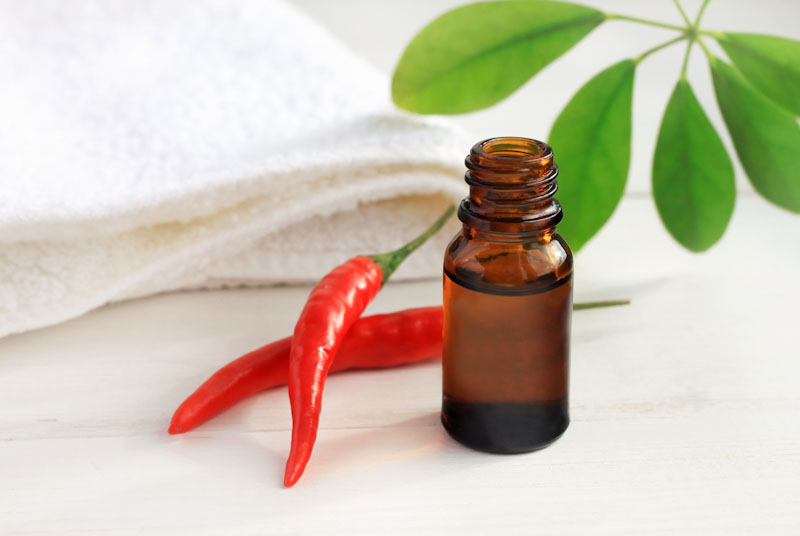We often take for granted the simple act of moving, and we don’t think much about the natural functions of our bodies. However, for millions of people worldwide, this body’s freedom is stolen by arthritis.
Arthritis isn’t a single disease but an umbrella term for over 100 conditions affecting the joints. It’s a spectrum of pain, limitation, and frustration.
Two of the most common forms are osteoarthritis (OA) and rheumatoid arthritis (RA). Osteoarthritis, is often called “wear and tear” arthritis since it’s a mechanical breakdown. Over time, the cartilage cushioning our joints degrades, causing bone to rub on bone. The result: stiffness, pain, and grinding sensations.
RA, on the other hand, is an autoimmune disease. The body’s immune system attacks the synovial membrane (the soft lining that lubricates and protects joints) by mistake,. This chronic inflammation can damage cartilage and bone, leading to pain, swelling, and even joint deformity.
While there’s no cure for arthritis, there are ways to manage it. Natural remedies can play a valuable role alongside traditional treatments. Let’s explore some homemade remedies that everyone can try.
Home remedies for joint pain:
Soaking painful joints in an Epsom bath
Known scientifically as magnesium sulfate, Epsom salt is a natural wonder with a long history of helping people manage pain. This mineral compound contains Magnesium, a superhero for relaxation and muscle recovery.
Here’s what you’ll need to make an Epsom soak:
- Grab a ½ cup of Epsom salts.
- Find a large bowl or, for full-body relief, a bathtub.
- Fill your chosen vessel with warm, comfortable water.
Directions:
- Pour your ½ cup of Epsom salts into the warm water and stir gently until dissolved.
- For targeted relief, immerse your sore joints in the Epsom salt solution.
- If your pain is more widespread, draw a warm bath and add 2 cups of Epsom salts.
How Magnesium helps with joint pain
Magnesium is an essential mineral that plays a crucial role in numerous bodily functions, including muscle relaxation and nerve function. When absorbed through the skin during an Epsom salt soak, it helps to:
- Reduce inflammation, thus easing the pain and swelling in sore muscles and joints.
- Improve circulation, which is know to promote healing by delivering oxygen and nutrients to affected tissues
- Enhance relaxation by calming the nervous system.
Making a Peppermint and Eucalyptus oil blend
While arthritis may be a chronic condition, managing the discomfort doesn’t have to be. This DIY peppermint eucalyptus oil blend offers a natural approach to temporary pain relief.
Peppermint and eucalyptus aren’t magic cures, but they do pack powerful hits against pain. These essential oils have analgesic properties that will help numb or reduce discomfort. Besides their anagasic properties, the oils produce a cooling sensation, stimulating your nerves and bringing a wave of soothing relief.
To create a pain-relief potion, you will need the following:
- 5 to 10 drops of peppermint oil
- 5 to 10 drops of eucalyptus oil
- 1-2 tablespoons of carrier oil (the best and most affordable one being olive oil)
- A small, dark glass recipient
Directions:
- In your dark glass recipient, add 5 to 10 drops each essential oil.
- Since these essential oils are potent, they must be diluted before topical application. Gently add 1-2 tablespoons of your chosen carrier oil to the bottle.
- Swirl the mixture gently to combine the oils. Store the solution in a cool and dark place, away from direct sunlight.
How to use
When a flare-up strikes, apply a few drops to the affected area and massage gently. The cooling sensation and analgesic properties can provide temporary relief, allowing you to move with more ease.
A quick note: Essential oils are powerful and can irritate the skin, especially when not diluted. Always perform a patch test on a small area of your inner arm before applying it to a larger area. Talk with your doctor before using essential oils if you are expecting, breastfeeding, or have a knwong underlying health condition.
Massage the painful joints using olive oil
For centuries, olive oil has been a cornerstone of healthy living. But did you know this “liquid gold” might also hold the key to managing arthritis pain?
The curative secret lies in a compound called oleocanthal, found in high concentrations within extra virgin olive oil (EVOO). Research suggests oleocanthal acts similarly to pain relievers like Advil or aspirin by inhibiting COX-1 and COX-2 enzymes, which contribute to inflammation. Studies indicate that consuming 1 ½ tablespoons of EVOO daily can offer pain relief comparable to 200mg of ibuprofen!
How to use olive oil:
To maximize the benefits, you should opt for extra virgin olive oil (EVOO), as it boasts the highest levels of oleocanthal. Look for “cold-pressed” on the label. This process preserves the precious oleocanthal that heat destroys.
EVOO offers a two-pronged approach to managing arthritis pain:
Internal Relief: Ingest 2-3 tablespoons of EVOO daily. Remember its high-calorie content, so substitute it for other fats in your cooking.
Topical Application: Massage a small amount of EVOO directly onto sore joints twice daily for a localized soothing effect.
A quick note: While EVOO offers a natural approach to pain management, it’s not a cure-all. Consult your doctor before incorporating it into your routine, especially if you have any underlying health conditions.
The power of capsaicin
Arthritis pain can be relentless, but there’s an ingredient in your kitchen that might offer some relief: the humble cayenne pepper. This spice is packed with a potent compound called capsaicin, and it offers a natural approach to managing discomfort caused by joint pain.
Capsaicin, the reason chili peppers bring the heat, acts as a pain warrior. It disrupts the production of Substance P, a chemical messenger responsible for relaying pain signals to your brain. By interfering with this communication channel, capsaicin essentially downplays the pain message, leading to a temporary yet significant reduction in discomfort.
Here’s what you’ll need to make a cayenne ointment:
- Cayenne pepper powder (start small and adjust based on spice tolerance)
- Carrier oil (options include coconut oil, olive oil, or grapeseed oil)
- Small, airtight container
Directions:
Start with a small amount of cayenne pepper powder, considering your spice tolerance. You can always add more later.
In your chosen container, combine the cayenne pepper powder with your carrier oil. Aim for a thick paste-like consistency.
Before applying to affected joints, test a small amount of the ointment on a non-sensitive area of your skin to check for irritation.
How to use the cayenne ointment:
Once you’ve ensured it doesn’t irritate your skin, apply a thin layer of the ointment directly to your sore joints. The initial sensation might be a burning warmth, followed by a numbing effect as capsaicin works its magic.
A quick note: Cayenne ointment offers temporary pain relief. Reapply as needed, but be mindful of skin sensitivity. If you’re new to Cayenne, begin with a low concentration and gradually increase based on your comfort level.
Juniper Berry Tea
Arthritis pain can be debilitating, but again, your pantry may hold a pain relief you’re not aware of: juniper berries. A 2009 study concluded that these tiny berries may hold the key to managing discomfort, thanks to a powerful compound called terpinene-4-ol.
Terpinen-4-ol, a natural component in juniper berries, acts as a modulator of the immune system. This natural component targets monocytes, which are white blood cells involved in the inflammatory response.
Studies suggest that daily consumption of juniper tea, made from specific varieties like prickly juniper or common juniper, might help reduce this inflammatory response by regulating monocytes, leading to potential pain relief.
Making juniper berry tea
Here’s what you’ll need:
- 1 tablespoon of dried juniper berries (prickly or common juniper)
- 1 cup of fresh water
- Honey (optional, for taste)
Directions:
- Bring 1 cup of water to a boil.
- Add 1 tablespoon of dried juniper berries in a cup or recipient of your choice and pour the boiling water over the berries. Let them steep for 15-20 minutes, and then strain the liquid into a clean mug.
- If desired, add a touch of honey to enhance the flavor.
Dosage: Enjoy 1 cup of juniper berry tea twice daily.
A quick note: While generally safe, consult your doctor before incorporating juniper tea into your routine, especially if you are pregnant or have any underlying health conditions.
Get physical
Exercise is your greatest ally to keep your body healthy. While the thought of getting active might seem daunting, regular movement is a cornerstone of managing arthritis discomfort.
Exercise offers a multi-pronged attack on arthritis:
- Exercise helps with weight control, reducing the burden on your already challenged joints.
- It strengthens the muscles, promoting better joint stability and function.
- Exercise warms things up, making the synovial fluid more liquefied and allowing for smoother joint mobility.
Here’s how incorporating exercise into your routine can benefit you:
Start small with brisk walking and aim for 15 minutes daily. Then, gradually build a consistent walking routine. It’s a low-impact activity that gets your heart rate up and your joints moving.
Add specific stretches and exercises to your routine. There are different types of exercises that can help you improve flexibility and reduce stiffness in your joints.
A quick note: Discuss an exercise plan with your doctor to ensure it’s safe and suitable for your specific needs and type of arthritis. Start slow, gradually increase the intensity, and don’t push through pain. Choose activities you find fun and engaging, making exercise a positive experience you’ll look forward to.
Concluding
Arthritis pain can be a constant challenge, but it doesn’t have to define your life. By incorporating these natural remedies, you can take an active role in managing your discomfort and improving your overall well-being.










